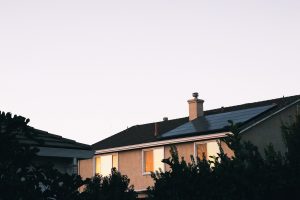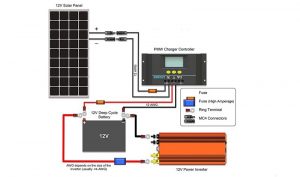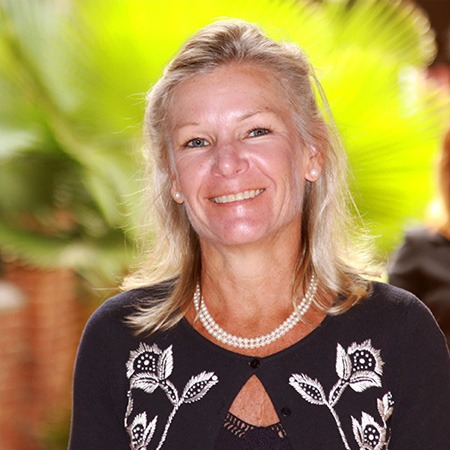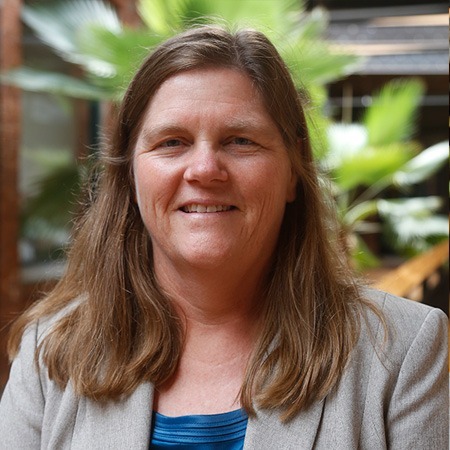Could Solar Power Be A Good Investment For You?
By Dale Harrison (Posted May 10, 2020):

Adding solar panels to your home can be a great alternative power source and save money.
During these times of uncertainty due to the COVID-19 and the violent storms in our region, many discussions about alternative power have arisen. When the power grid goes offline for any reason, it’s nice to know you have a backup system to help carry you through the outage.
Even if these events were not happening, the addition of a solar power system to your home might provide huge savings on your monthly electric bill.
The most common solar panels are available as 12-volt or 24-volt panels. Most high-efficiency 12-volt panels usually produce 100 watts in direct sunlight, and the 24-volt panels produce 200 watts. There are higher voltage panels available, but as the voltage increases so does the price.
If you are planning on using your backup system to power household appliances such as TVs, refrigerators, freezers, or other small-wattage appliances, it would probably be better to use 48-volt panels. They not only take up less space, but each panel also produces twice the wattage as 12-volt panels. However, if you just plan on running lights or appliances that won’t exceed 1,500 watts, the 12-volt panels should work fine. Please see the image below for an example of what is required for a basic setup for solar power:

Figure 1 – Typical Solar Power Setup
Figure 1, to the right, shows a basic solar setup that shows the components needed to achieve a solar power backup system for your home. These items are readily available from Amazon and are relatively easy to install. The recommended items for a low-cost beginner setup as shown in Figure 1 are as follows:
- 12-volt 100-watt solar panel
- 12-volt solar battery charge controller
- 12-volt deep cycle battery
- 12-volt 2,000-watt power inverter converts 12 volts DC to 110-120 volts AC
- Solar panel wiring cable to go from the solar panel to the charger
- 12-gauge wire to go from charger to battery
- 4- to 10-gauge wire to go from battery to inverter
- In-line fuses
This beginner setup will allow you to use lights, small TVs, radios, and small appliances that require 110- to 120-volt AC power. The number of items you can power at one time and for how long will be dependent on the size and type of solar components you choose to install. As an example, with the components listed above, you should be able to run two 15-watt LED lights for approximately 100 hours if there is no sunlight. If you are receiving an average of hours of sunlight per day, you can run them indefinitely. There are calculators online that will allow you to enter your specific solar setup and then will give you information showing the items you can power and for approximately how long.
As a side note regarding item 4 above, if you want to run sensitive electronic equipment such as computers, computer monitors, or certain types of televisions, it is recommended that you purchase a pure sine wave inverter.
There are two types of inverters, the pure sine wave, and the modified sine wave. The pure sine wave inverter is usually more expensive, but it produces the same power characteristics as your electric company provides you.
The approximate cost for the above setup:
- 12-volt 100-watt solar panel – $100
- Charge controller – $ 50.00
- 12-volt 100-SMP hour battery – $110
- 2,000-watt pure sine inverter – $250
- Cable & fittings – $30
Total: $ 540
The above cost is for reference only. The actual cost will depend on the quality of the equipment you wish to purchase.
If you want to save money and be prepared for power outages, then it could be a great investment to have a professionally installed system. My research has shown that an investment of around $10,000 would pay for itself in about 5 to 8 years depending on the amount of sunlight you receive. Once installed, a considerable amount of power being used by your home will come from your solar power system and decrease the cost you are paying your local power company. On optimum days when your solar power system is supplying all your home needs, the excess that it produces can be sold back to your power provider. You can have them send you a check for this amount or you can have them apply it to your account, so when you do have a decrease in sunlight, such as in winter, your monthly bills will be reduced during those times. Another plus to having a professional solar system installed is the tax credits that are currently available, which would offset some of your installation costs.
The information shown here regarding solar power is just a very basic understanding of what this resource can do in times of an emergency or if you just want to save money on your monthly electric bill. There are lots of different manufacturers of solar equipment and tons of information on the internet explaining different options. If you plan on going solar, research, or contact a professional installer for advice before you commit to purchasing. The cost of setting up a solar power system has been decreasing over the past few years, and hopefully, this article has answered any questions you might have about solar power so you can decide whether or not it is right for you.






